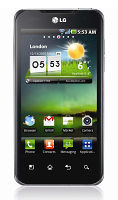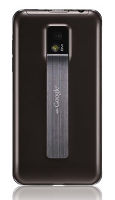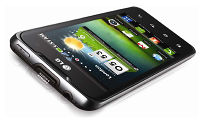Sunday, February 27, 2011
10 Ways To Go Green On Your PC
By Mark Tiongco - February 27, 2011 | |
Let’s face it, hybrid cars, solar panels and wind farms are invading! The trend of going green is catching up to all of us whether we like it or not and we see it virtually everywhere. If you’re looking to save on your energy bill or want to do your part by conserving, this article has 10 tips that can help lower power consumption and reduce paper dependency with your desktop PC.
While more and more OEM computer parts manufacturers are upping the ante on computer power supplywattage and more stream processors on video cards, some companies like Seagate are taking a step backwards and creating hard drives that eat up less power. The idea behind a green hard drive is that its spindle speed is less, like 5900 rpm, but is engineered to perform virtually on par with its faster 7200 rpm siblings. The way they do is by enhancing other functions like offering 32-64mb cache buffer or utilize the new SATA 3 (SATA/600) interface which offers blazing-fast file transfers. These hard drives come in usually larger sizes, between 500GB to 2TB sizes and can be used in external drive cases.
| |
Show Chrome’s Tabs as Separate Aero Peek Thumbnails
If you want to enable it, all Chrome builds (including the stable build) will let you add the flag
--enable-aero-peek-tabs after the quoted path in the shortcut on your desktop or in your taskbar (if you hold shift when you right click you can go to properties and add it there).If you go to start Chrome and realize it didn't work, close down the browser and make sure you end all Chrome.exe processes in the task manager. Certain plug ins are more persistent than the actual browser and will retain chrome's settings (such as this one) until the entire browser restarts (at least in the dev version, to which this is not exclusive).
Friday, February 11, 2011

Yesterday Microsoft announced the release candidate of Internet Explorer 9, which is very close to the final product. Here’s a screenshot tour of the most interesting new stuff, as well as answers to your questions.
The most important question is should you install this version? And the answer is absolutely yes. Even if you don’t use IE, it’s better to have a newer, more secure version on your PC.
What’s New Under the Hood in Release Candidate vs Beta?
If you want to see the full list of changes with all the original marketing detail, you can read Microsoft’s Beauty of the Web page, but here’s the highlights that you might be interested in.
- Improved Performance – they’ve made a lot of changes, and it really feels faster, especially when using more intensive web apps like Gmail.
- Power Consumption Settings – since the JavaScript engine in any browser uses a lot of CPU power, they’ve now integrated it into the power settings, so if you’re on battery it will use less CPU, and save battery life. This is really a great change.
- UI Changes – The tab bar can now be moved below the address bar (see below for more), they’ve shaved some pixels off the design to save space, and now you can toggle the Menu bar to be always on.
- Pinned Sites – now you can pin multiple pages to a single taskbar button. Very useful if you always use a couple web apps together. You can also pin a site in InPrivate mode.
- FlashBlock and AdBlock are Integrated (sorta) – there’s a new ActiveX filtering that lets you enable plug-ins only for sites you trust. There’s also a tracking protection list that can block certain content (which can obviously be used to block ads).
- Geolocation – while a lot of privacy conscious people might complain about this, if you use your laptop while traveling, it’s really useful to have geo-located features when using Google Maps, etc. Don’t worry, it won’t leak your privacy by default.
- WebM Video – Yeah, Google recently removed H.264 from Chrome, but Microsoft has added Google’s WebM video format to Internet Explorer.
Keep reading for more about using the new features.
Questions You Might Have
You probably want to get to the screenshots, but first, here’s a couple of answers to questions you haven’t asked yet.
- No, Internet Explorer 9 does not work on Windows XP.
- Yes, you can install IE9 over top of the beta version if you had that installed.
- Yes, If you have 32-bit Windows, you should install the 32-bit version.
- Yes, If you have 64-bit Windows, you should install the 64-bit version (which includes the 32-bit version). Not sure? Here’s how to see what version of Windows you have.
- Yes, you should upgrade to this version.
- Yes, if you click this link it will take you to the download page.
Again, even if you don’t use IE as your primary browser, it’s better to have this new, more secure browser than smelly old IE8.
Now You Can Move the Tabs Below the Address Bar (Again)
The biggest problem with IE9 for most power users is that the tabs and the address bar are on the same row, which quickly turns your tabs into tiny little unusable tab-lets. Did I just write that?

Now you can simply right-click on the tab bar to move the tabs to a separate row.

And now you’ll have a lot more space. The impressive thing is that even with the change to use two rows, it’s still pretty compact compared to other browsers.

Sadly there’s no option to put the tabs up top.
Pinning Multiple Sites Together
This new feature is slightly confusing at first, so we’ll walk you through it—imagine first that you’ve pinned a site to your taskbar, by simply dragging the site’s icon down to the taskbar. Easy.
Now browse to another URL in that window, and then right-click on the icon on the left-hand side, and choose “Add as a home page”. This will add that page as well, so the next time you open up that pinned site, it will open both.

The much simpler method, however, is to just go to the Tools icon on the right-hand side of IE’s tab bar, choose Internet Options, and then put the URLs you want in there.

You’ll notice that both of the ones that I added are now in here.
How to Enable “FlashBlock”
Internet Explorer has a pretty useful feature that blocks any ActiveX controls from running except for sites you specify them on—since the only plugin required for most sites is Flash, that essentially makes this a FlashBlock feature.
Just head to the Tools icon on the right of the tab bar, then Safety –> ActiveX Filtering. That’s it.

Now the next time you go to a site that needs Flash, click the little circle with the line through it, and turn off ActiveX Filtering for that site.

I really wish this feature was in Google Chrome, and every other browser.
Enabling Tracking Protection (Possibly Ad Blocking)
You can enable the Tracking Protection feature through the same menu as the previous feature, and once you do, it will pop up the Manage Add-ons screen, where you can select the “Your Personalized List” item on the right.
Once you do, you can enable it, or click Settings to see more.

Under here you can choose to automatically block everything, or just choose the content you want to block. It’ll show the most frequently used stuff, and let you block it. If you aren’t seeing enough there, adjust the 10 down to 3, and you’ll see more.

You should be careful with using the Automatic block here, because it appears to block some things required for certain sites to function, like common javascript libraries such as jQuery.
Tweaking Performance for Battery Life
To tweak the power / performance settings, head into Power Options –> Edit Plan Settings –> Change advanced power settings, and then scroll down to the bottom of the window.

Now you can configure the settings if you want, though we’d advise just leaving them be.
Go forth, and download it.
Tuesday, February 8, 2011
LG Optimus 2X review: Double the potential
Introduction
Begun the dual-core revolution has. And there’s no scouting time – the offensive starts with the big guns. The LG Optimus 2X is not just counting on the fancy Tegra 2 name to generate the sales – it is a powerful smartphone through and through.
The fancy camera with Full HD video recording alone is enough to bring any handset into the limelight and the fact that it’s not even the Optimus 2X key feature speaks volume. As far as hardware evolution goes, the Optimus 2X promises to be one of the biggest steps forward in the mobile phone industry.
Key features:
- Quad-band GSM and dual-band 3G support
- 10.2 Mbps HSDPA and 5.76 Mbps HSUPA
- 4.0" 16M-color capacitive IPS LCD touchscreen of WVGA resolution (480 x 800 pixels)
- Android OS v2.2 Froyo with LG Home launcher
- Dual-core 1GHz ARM Cortex-A9 proccessor, ULP GeForce GPU, Tegra 2 chipset
- 512 MB RAM
- 8 MP autofocus camera with LED flash and geotagging
- 1080p video recording @ 24fps, 720p@30fps
- 1.3 MP front-facing camera with videocalls
- Wi-Fi b/g/n and DLNA
- GPS with A-GPS, digital compass
- 8GB internal storage and microSDslot for up to 32GB cards
- Accelerometer, gyroscope, and proximity sensor
- microHDMI port with HDMI mirroring
- Standard 3.5 mm audio jack
- Stereo FM radio with RDS
- microUSB port (charging) and stereo Bluetooth v2.1
- Smart dialing, voice dialing
- DivX/XviD video support
- Innovative gesture controls
- Adobe Flash 10.1 support
- Dolby Mobile and SRS sound enhancement
- LG Optimus GT540 Unlocked GSM Quad-Band Phone with 3 MP Camera, Android OS, Touch Screen, Wi-Fi, Bluetooth--International Version with No US Warranty (Black)
Main disadvantages
- Despite similar technology LCD isn’t quite as impressive as the iPhone4 screen
- No dedicated camera key and no lens cover
- 1080p recording isn’t well polished
- No Android 2.3 Gingerbread at launch
- Audio quality is only average
- Below average speaker loudness
There are always a few compromises necessary with modern-day smartphones, but those are brought to a minimum with the Optimus 2X. You have a relatively good display (large, too), lots of oomph under the sleek hood and an excellent snapper at the back, plus all but the kitchen sink in the connectivity department.
Or at least that’s what papers will make you believe. Our experience, however, has thought us better than blindly believing the fancy PR talk. The excellent first impression certainly helps the Optimus 2X cause, but we’ll only be able to recommend it wholeheartedly if it passes the test of a full review.
So, shall we start? Join us after the break for the hardware review.
Continue reading at: http://www.gsmarena.com/lg_optimus_2x-review-564.php
Sunday, February 6, 2011
Black Berry 9780 sale!
Subscribe to:
Comments
(Atom)














